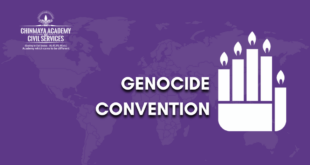It takes around three hours to fly from Tokyo to Naha, the southern tip of Okinawa island in the East China Sea. Naha’s subtropical charm can be mesmerising. At the airport, the sight of giant-sized phalaenopsis orchid — in shades ranging from deep pink to crispy white — are a mood-lifter. But Okinawa is known less as a touristy paradise and more as a strategic anchor from where U.S. troops assert their military heft in the Pacific. The bulk of all U.S. troops deployed in Japan are based along a 1,000-km island stretch. This includes the Okinawa main island, but there are 149 others. Okinawa is co-linked with Guam, a U.S. island in Micronesia, less than 2,300 km away. Together with the Japan Self Defence Force (JSDF) in Okinawa, the Americans reinforce a key segment of a vast “first island chain”. After the emergence of the People’s Republic of China in 1949 and the onset of the Cold War, John Foster Dulles, a former Secretary of State, developed the “island chain strategy” of besieging China and the former Soviet Union from the sea. Dulles’s doctrine, aired during the heat of the Korean War, had three layers. Of the three island chains, the “first island chain” was the most important. The lengthy network starts from Kamchatka peninsula in Russia’s Far East and weaves its way into Japan. Then, from the southernmost part of the Japanese mainland, it passes through Okinawa, a part of a larger Ryukyu island chain which ends with Taiwan. From Taiwan, the “first island chain” heads towards the Philippines and the island of Borneo, before looping towards the tip of the Malay Peninsula. The heavy presence of its forces, which began after 1945 when the U.S. occupied Okinawa, had triggered a spate of local protests. The use of Okinawa as a prime staging post for U.S. offensives during the Korean War, and later in the 1960s, during the Vietnam War, had continued to fuel protests. The discontent grew further after information was leaked that the notorious Agent Orange, infamously used as a defoliant chemical during the Vietnam war, was stored in Okinawa. After the handover of Okinawa to the Japanese in 1972, Tokyo has been under considerable domestic pressure to lighten the presence of U.S. troops. But given its geopolitical centrality, it is unlikely that American deployments in Okinawa will fundamentally change any time soon.
Check Also
Genocide Convention
The United Nations Convention on the Prevention and Punishment of the Crime of Genocide, …
 Chinmaya IAS Academy – Current Affairs Chinmaya IAS Academy – Current Affairs
Chinmaya IAS Academy – Current Affairs Chinmaya IAS Academy – Current Affairs



